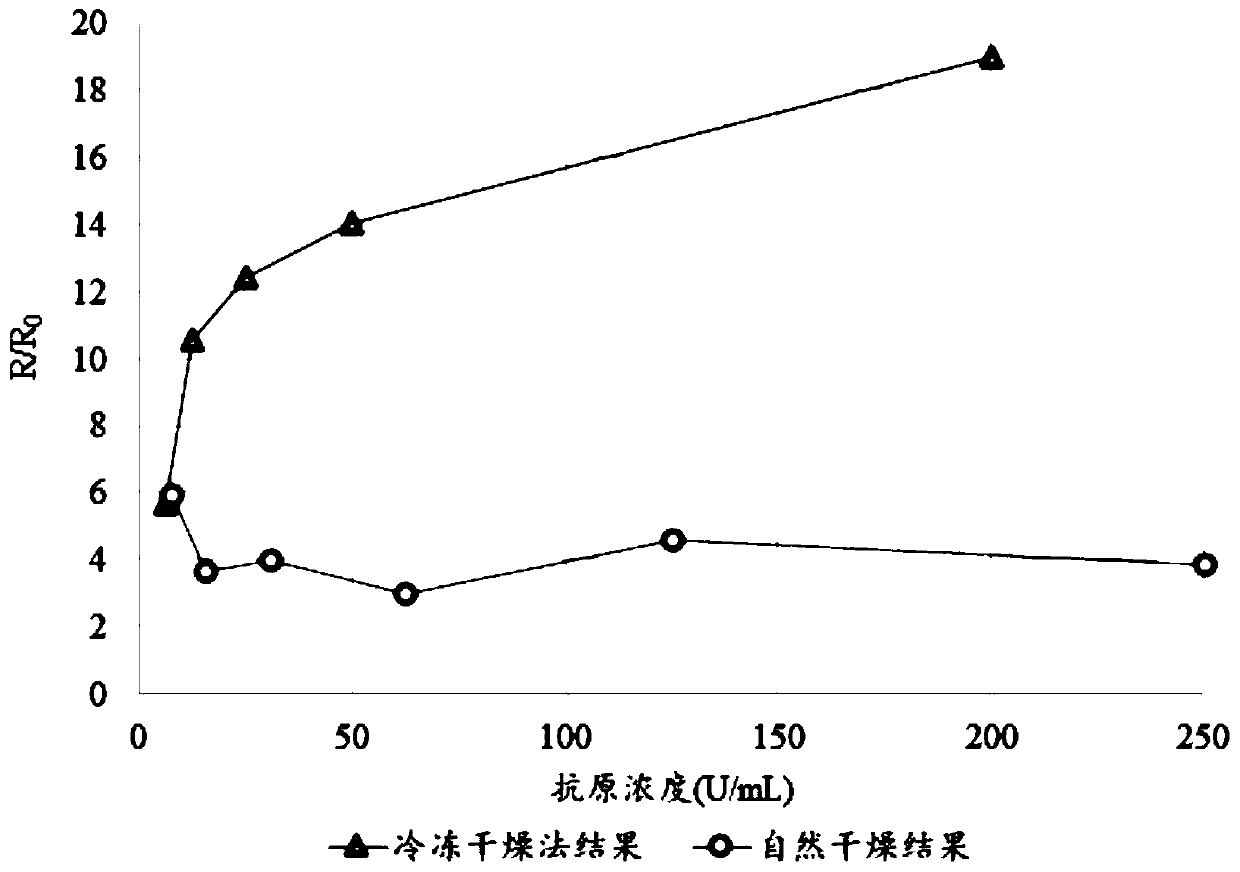A kind of freeze-drying preservation method and application of wet paper-based sensor
A preservation method and sensor technology, applied in instruments, scientific instruments, measuring devices, etc., can solve problems such as unsatisfactory timeliness, lack of preservation methods, and inactivation of biological substances, achieving rapid screening, high market value, high precision effect
- Summary
- Abstract
- Description
- Claims
- Application Information
AI Technical Summary
Problems solved by technology
Method used
Image
Examples
preparation example Construction
[0035] A method for preparing a paper-based sensor element for detecting cancer according to an embodiment of the present invention, comprising:
[0036] According to the number of parts by mass, carboxylated multi-walled carbon nanotubes are 2 parts, EDC should be greater than or equal to 77 parts, and NHSS should be greater than or equal to 22 parts;
[0037] Specifically, prepare the reagents and materials needed for the preparation process: 2mg of carboxylated multi-walled carbon nanotubes, at least 4mL (0.1M) MES solution, 77mg of EDC powder, 22mg of NHSS powder, at least 100mL of PBS solution, Tween20 solution (concentration 0.05%) 10uL, 100uL of BSA solution (concentration 1%), two pieces of filter paper, two pieces of glass slides, gel, 0.5mL of antibody solution (concentration 0.01mg / mL).
[0038] Its preparation process comprises the following steps:
[0039] 1) Weigh 2 mg of carboxylated carbon nanotubes, and then pour the powder into a large centrifuge tube; you c...
Embodiment 1
[0067] A method for preparing a biosensor element for detecting cancer in an embodiment of the present invention comprises the following steps: preparing 2 mg of carboxylated multi-walled carbon nanotubes (purchased from Shanghai Macklin Biochemical Technology Co., Ltd., with an inner diameter of 5-12 nm and an outer diameter of 5-12 nm). diameter 30-50nm, length <10nm), add 0.4mmol EDC and 0.1mmol NHSS, and disperse in 4mL of 0.1mol MES solution. The dispersion solution was sonicated in a water bath for about 40 minutes in an ultrasonic instrument (Xinzhi SB-3200OTD), and then mixed evenly with a mixer (SCI LOGEX ICC8). After mixing, centrifuge for 10 minutes (3000rp / m) with a centrifuge (TD6, ordinary instrument), and then remove the supernatant. After the end, PBS buffer solution was added to the precipitate, centrifuged for 10 min (3000rp / m), and the supernatant was removed. Repeat the above PBS washing process for at least 5 times to remove excess EDC and NHSS in the pel...
PUM
 Login to View More
Login to View More Abstract
Description
Claims
Application Information
 Login to View More
Login to View More - R&D
- Intellectual Property
- Life Sciences
- Materials
- Tech Scout
- Unparalleled Data Quality
- Higher Quality Content
- 60% Fewer Hallucinations
Browse by: Latest US Patents, China's latest patents, Technical Efficacy Thesaurus, Application Domain, Technology Topic, Popular Technical Reports.
© 2025 PatSnap. All rights reserved.Legal|Privacy policy|Modern Slavery Act Transparency Statement|Sitemap|About US| Contact US: help@patsnap.com



